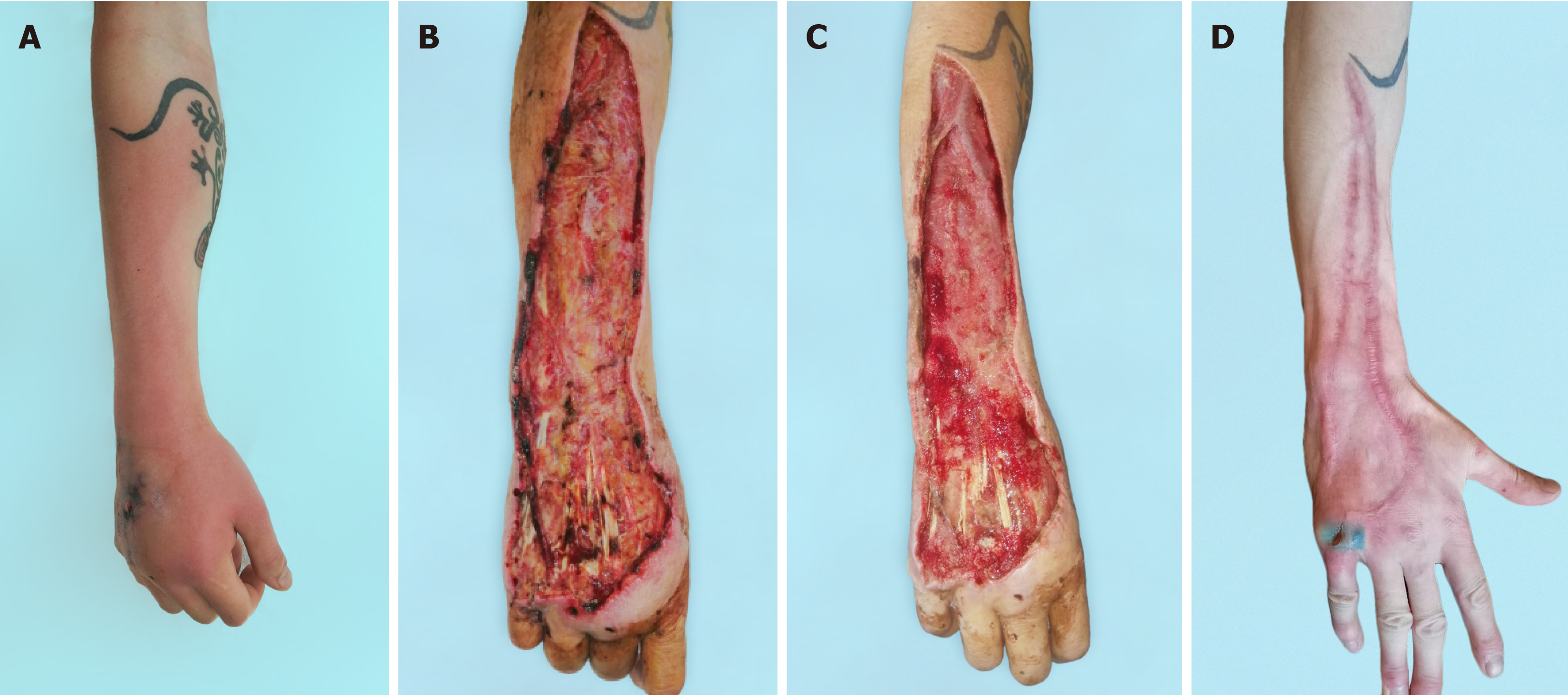Copyright
©The Author(s) 2024.
World J Orthop. Nov 18, 2024; 15(11): 1015-1022
Published online Nov 18, 2024. doi: 10.5312/wjo.v15.i11.1015
Published online Nov 18, 2024. doi: 10.5312/wjo.v15.i11.1015
Figure 1 Microorganisms cultured from patients with necrotizing fasciitis of the upper limb.
MSSA: Methicillin-sensitive staphylococcus aureus.
Figure 2 Plastic surgery of postnecrectomy wounds.
NPWT: Negative pressure wound therapy.
Figure 3 Treatment strategy for patients with necrotizing fasciitis of the upper limb.
VAC: Vacuum-assisted closure.
Figure 4 The first case.
A: Clinical presentation at admission; B: After first debridement; C: After negative pressure wound therapy; D: Long-term result of plastic surgery.
Figure 5 The second case.
A: Clinical presentation at admission; B: After debridement; C: After negative pressure wound therapy; D: After plastic surgery; E and F: Long-term outcomes after 6 mo.
Figure 6 The third case.
A: Clinical presentation at admission; B: After first debridement; C: After third debridement; D: Negative pressure wound therapy; E: After plastic surgery; F: Result.
- Citation: Lipatov KV, Asatryan A, Melkonyan G, Kazantcev AD, Solov’eva EI, Krivikhin DV, Gorbacheva IV, Cherkasov UE. Effectiveness of negative pressure wound therapy in complex surgical treatment of necrotizing fasciitis of the upper limb. World J Orthop 2024; 15(11): 1015-1022
- URL: https://www.wjgnet.com/2218-5836/full/v15/i11/1015.htm
- DOI: https://dx.doi.org/10.5312/wjo.v15.i11.1015














